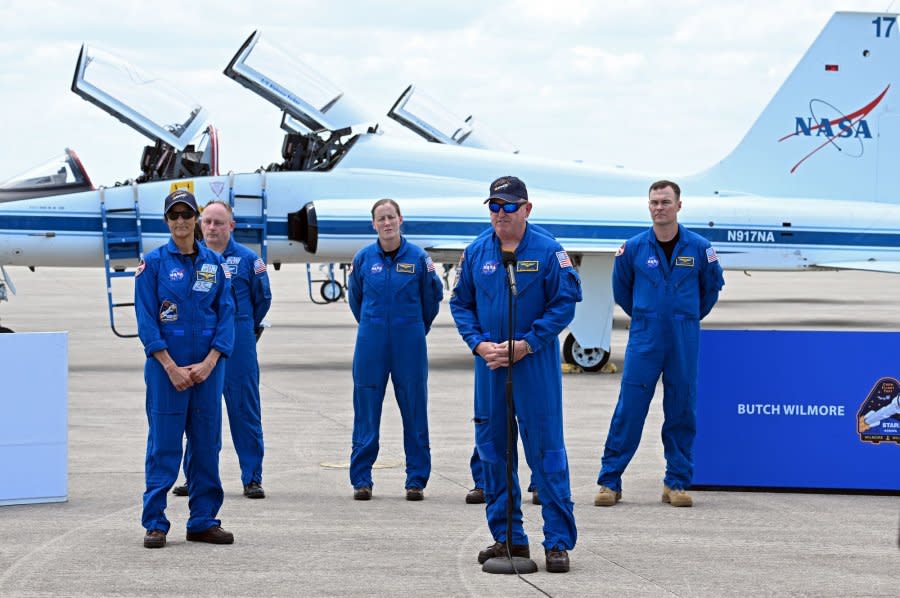Crew of first Boeing Starliner mission arrives at Kennedy Space Center

April 25 (UPI) -- The crew of the first Boeing Starliner space mission on Thursday arrived at NASA's Kennedy Space Center in Florida ahead of the spacecraft's debut manned mission on May 6.
Veteran NASA astronauts Barry "Butch" Wilmore and Sunita "Suni" Williams will be commander and pilot of the Crew Flight Test mission to the International Space Station.
The Boeing CST-100 Starliner is set to lift off on May 6 atop an Atlas V rocket from Cape Canaveral Space Force Station in Florida.
The CFT mission has been delayed for about four years because of various issues with the Starliner. While Wilmore and Williams said those issues are long resolved, they said new issues are sure to arise during the 11-day mission ahead of launch.
"Do we expect it to go perfectly? This is the first human flight [with] the spacecraft. I'm sure we'll find things out," Wilmore said after he and Williams arrived on the tarmac in a two-seat T-38 jet used for training.
"That's why we do this. This is a test flight. So when you do test, you expect to find things. We expect to find things."
The planned launch follows two previous uncrewed flights Boeing and NASA undertook to lay out procedures for the first crewed flight and test those procedures in flight simulators.
"We had the kitchen sink essentially thrown at us the other day, on a sim -- and we came out fine," Williams said. "So I have all the confidence in not only our capabilities, the spacecraft capabilities, but also our mission control team who's ready for the challenge. They're up for it."
The first uncrewed Starliner mission in 2019 failed to rendezvous with ISS. Boeing overhauled the program, including major software and hardware changes, and conducted a successful uncrewed flight in 2022.
Further hardware issues, such as with the main parachutes and wiring, have delayed Starliner's first crewed mission four years behind schedule.
SpaceX's fleet of Crew Dragon spacecraft, meanwhile, have flown 50 people to space on 13 missions.
NASA awarded the two companies contracts under its Commercial Crew Program to continue U.S.-based space travel after the Space Shuttle Program ended in 2011. Boeing's commercial crew contract for Starliner is valued at $4.2 billion, while the more successful SpaceX's contract is valued at $2.6 billion.
Wilmore on Thursday, however, said it's now Starliner's time to shine.
"We wouldn't be here if we weren't ready. We are ready. The spacecraft's ready. And the teams are ready," he said.
Boeing's CFT mission plans to stay for eight days aboard the ISS, during which the crew will test both docking backup systems on approach, as well as landing operations on the return to Earth.
If the CFT flight is a success, Starliner's first operational mission, Starliner-1, will take off for the ISS in early 2025 for a six-month tenure aboard the ISS.
Onboard Starliner-1 will be NASA astronauts Scott Tingle and Mike Fincke, and Canadian Space Agency astronaut Joshua Kutryk.
Boeing is contracted for six crew rotation missions through the end of the ISS's operations, projected for 2030. SpaceX and Boeing will share one mission each per year until the ISS is decommissioned.

